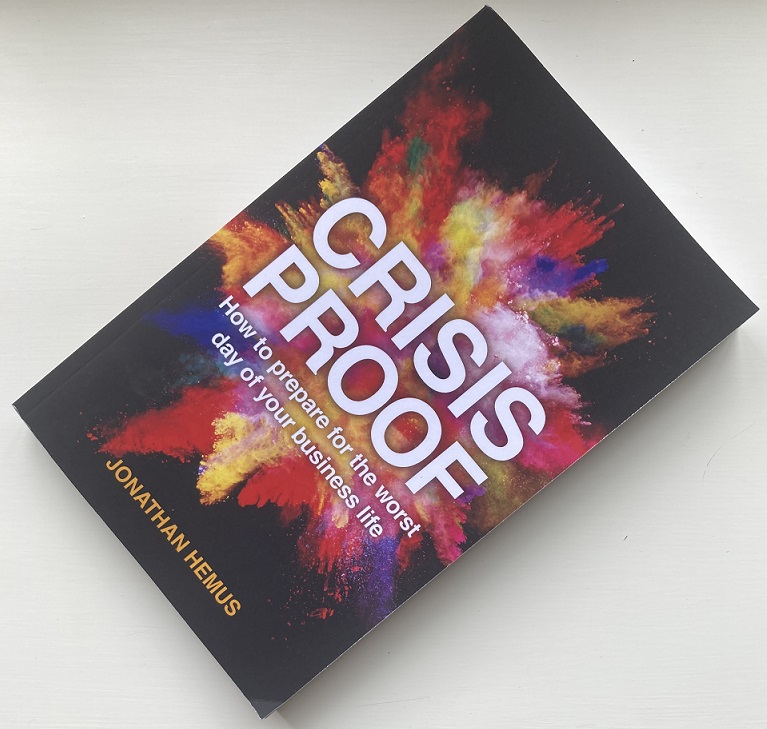Review: Crisis Proof

About the author
Richard Bailey Hon FCIPR is editor of PR Academy's PR Place Insights. He teaches and assesses undergraduate, postgraduate and professional students.

Crisis Proof: How to prepare for the worst day of your business life
By Jonathan Hemus
Rethink Press, 2020, 258 pages
There are many books by practitioners on the topic of crisis communication, with the better examples making a distinctive contribution. Among these, Andrew Griffin is strong on categorising different types of crises; Kate Hartley on understanding the consumer perspective while Amanda Coleman emphasises the recovery phase.
Jonathan Hemus focuses in this book on crisis preparedness. He cites the example of Merlin, the operator of Alton Towers amusement park, following the issue with the Smiler rollercoaster in 2015. ‘Its normal Alton Towers website was taken down within minutes and replaced with a more sober holding page detailing news of unfolding events. For Merlin to make this change so quickly demonstrates forethought and planning.’
This leads to a definition of the field as used by a well-known consumer-facing organisation:
A crisis is a sudden event or escalating issue that may significantly affect our reputation and/or our ability to carry out our business’ with the objective of ‘maintaining the long-term trust, confidence and support of all our stakeholders’.
As Hemus observes: ‘Because crisis management focuses on business value and reputation and is designed to preserve the long-term confidence of all its stakeholders, it is by definition a strategic activity.’
Within the strategic activity of crisis management, Hemus gives a more limited role to crisis communication. That’s because ‘to emerge from a crisis intact, businesses must do two things simultaneously: fix whatever problem lies at the heart of the crisis (the operational response) while at the same time communicating effectively with the many stakeholders affected by the situation.’
I’m reminded of Tony Langham’s pithy observation in Reputation Management that ‘if communication did not cause the problem, it cannot fix it.’
Other related fields discussed here include business continuity management (‘keeping your business running despite the disruption caused by an incident’), risk management (‘an important part of crisis management’) and emergency response (‘the immediate response to an incident… focused on the preservation of life, the environment and property’).
Crisis preparedness involves four essential pillars, according to Hemus.
- Assess: ‘Assessing your crisis landscape gives you the understanding and foresight to effectively protect your business.’
- Plan: ‘Planning for a crisis gives you the foundations for a swift and effective response.’
- Train: ‘Plans play an important part in managing a crisis, but people make or break your response.’
- Exercise: ‘Organisations that have thoroughly rehearsed their crisis response are much more likely to make the right calls.’
These four pillars provide the structure for the heart of the book, designed to help with the creation and development of your crisis management plan including the formation of a multidisciplinary crisis management taskforce comprising internal and external experts and advisers.
As Hemus notes in his conclusion, this book was written during the pandemic in 2020.
‘If [this book] serves as a wake-up call for more organisations to plan, train and rehearse for crisis, that will be a positive and important by-product.’ Jonathan Hemus
It’s a practical book written for busy executives in short paragraphs and with many bullet points. The design is functional, but the lack of an index is a limitation as I wanted to revisit the rueful comments made by Gerald Ratner in an interview for this book. His name has for decades been linked with an example of a self-inflicted crisis, while fewer and fewer readers will recall the previous success of Ratners as a chain of High Street jewellers. A quick Google search shows his name is still associated with that infamous ‘gaffe’ from thirty years ago.
Crisis management may involve more than communication, but reputation is at its heart.